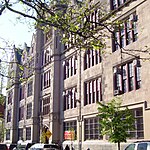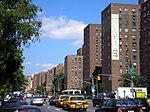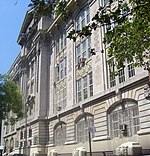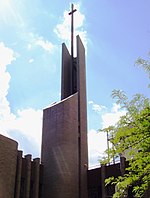Chapel of Free Grace (New York City)
1859 establishments in New York (state)19th-century Episcopal church buildingsBuildings and structures demolished in 1948Churches completed in 1859Churches in Manhattan ... and 8 more
Demolished buildings and structures in ManhattanDemolished churches in New York CityFormer Episcopal church buildings in the United StatesFormer Lutheran churches in the United StatesGothic Revival church buildings in New York CityLower East SideManhattan church stubsReligious organizations established in 1859
The former Chapel of Free Grace was a former mission chapel built in 1859 by St. George's Episcopal Church. Located at 406 East 19th Street in Manhattan, New York City, it was a gable-fronted steeply pitched masonry Gothic Revival church with a gable rose window. The Evangelical Lutheran Church of Christ (founded 1868) purchased the church building in 1882. The 19th Street building remained the Lutheran congregation's home until it was demolished in 1948 during the development of Stuyvesant Town by Metropolitan Life Insurance.
Excerpt from the Wikipedia article Chapel of Free Grace (New York City) (License: CC BY-SA 3.0, Authors).Chapel of Free Grace (New York City)
1st Avenue, New York Manhattan
Geographical coordinates (GPS) Address Nearby Places Show on map
Geographical coordinates (GPS)
| Latitude | Longitude |
|---|---|
| N 40.734088888889 ° | E -73.979647222222 ° |
Address
1st Avenue 332
10009 New York, Manhattan
New York, United States
Open on Google Maps






